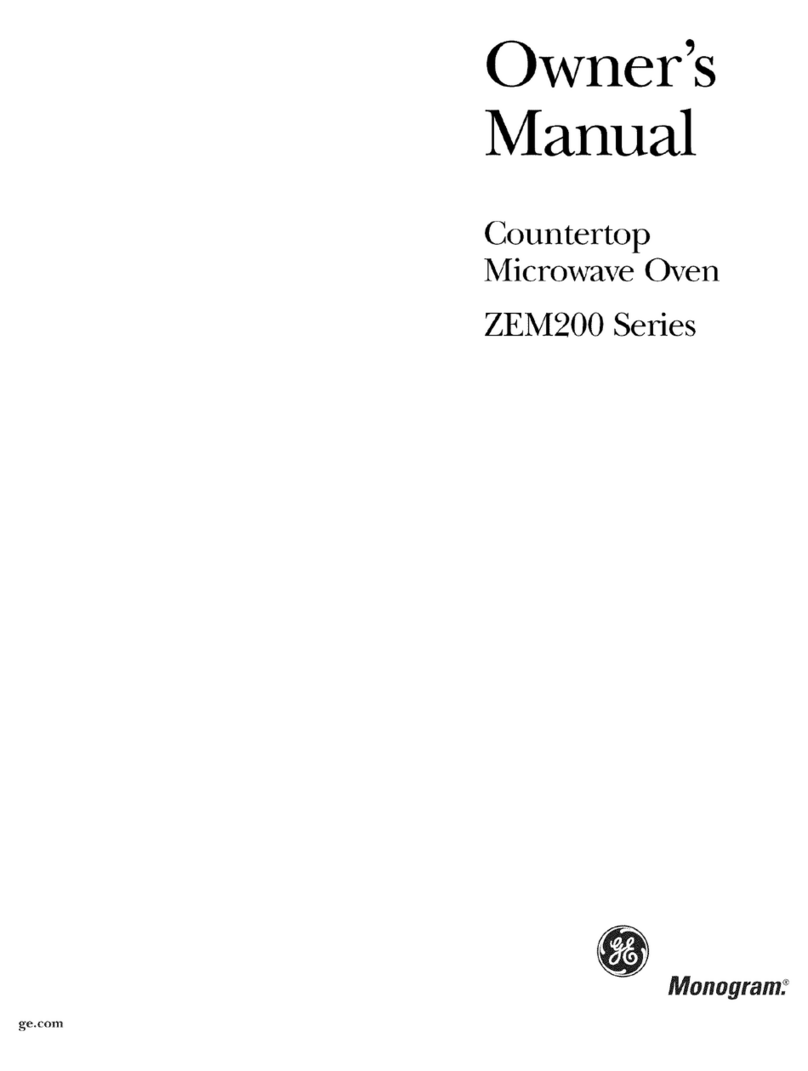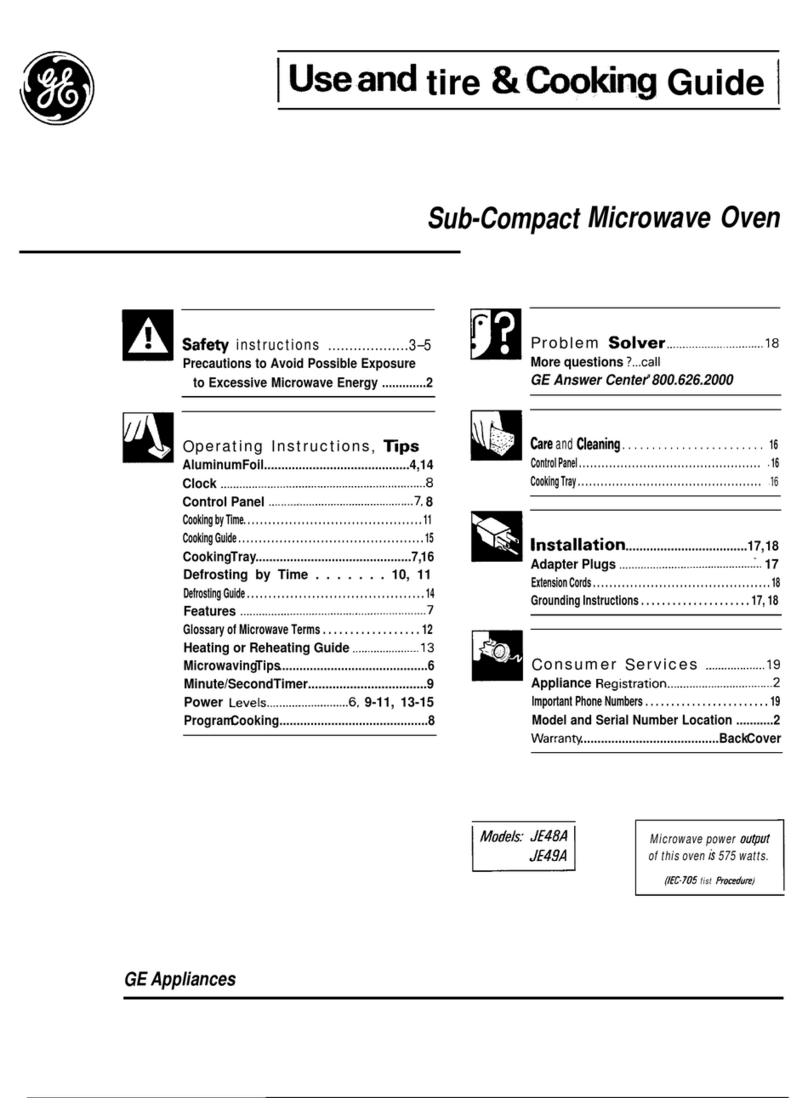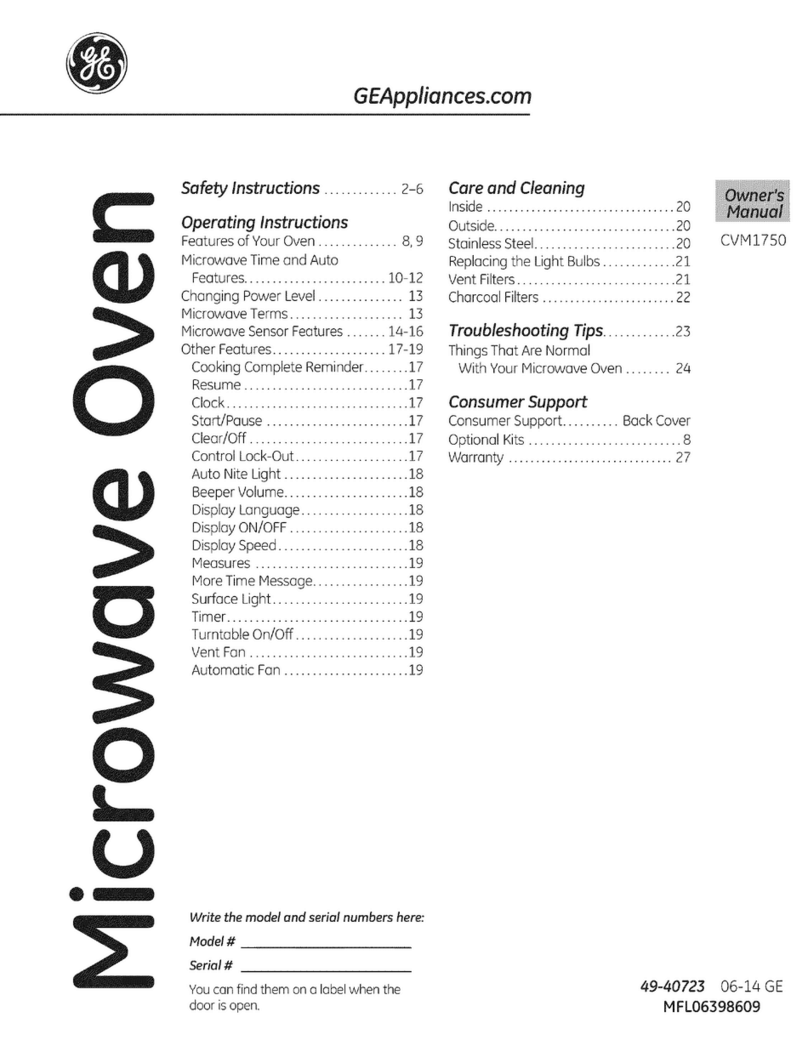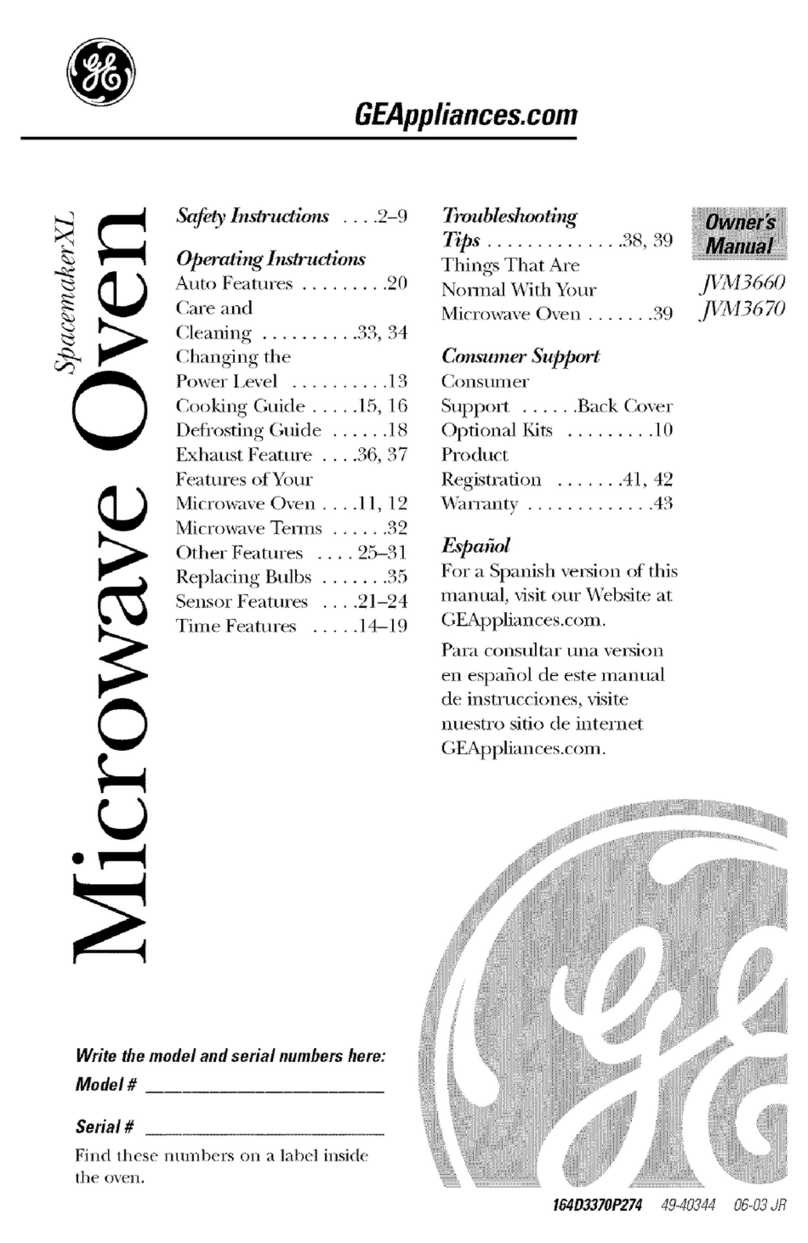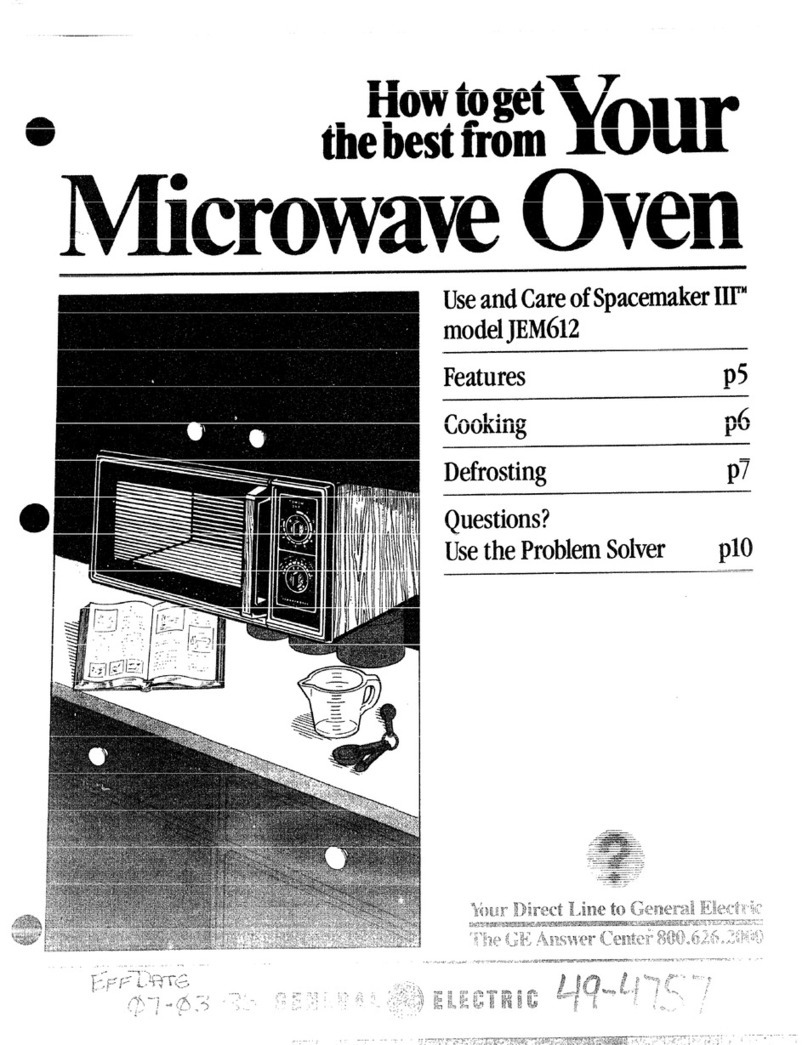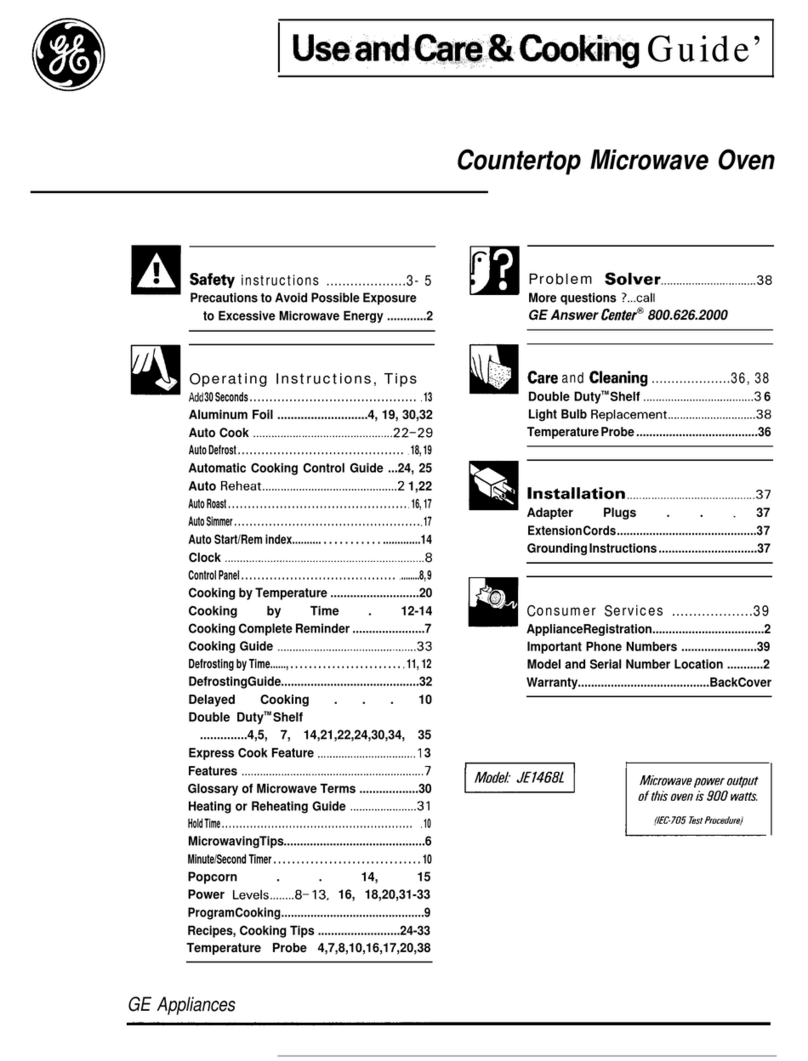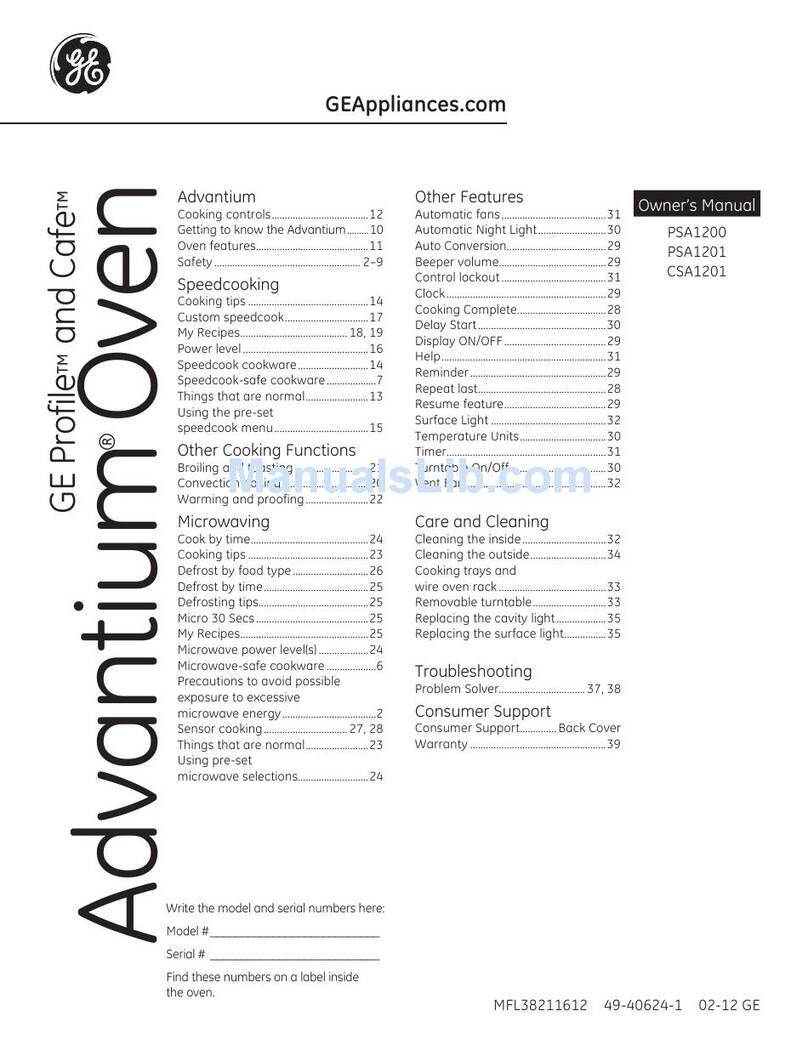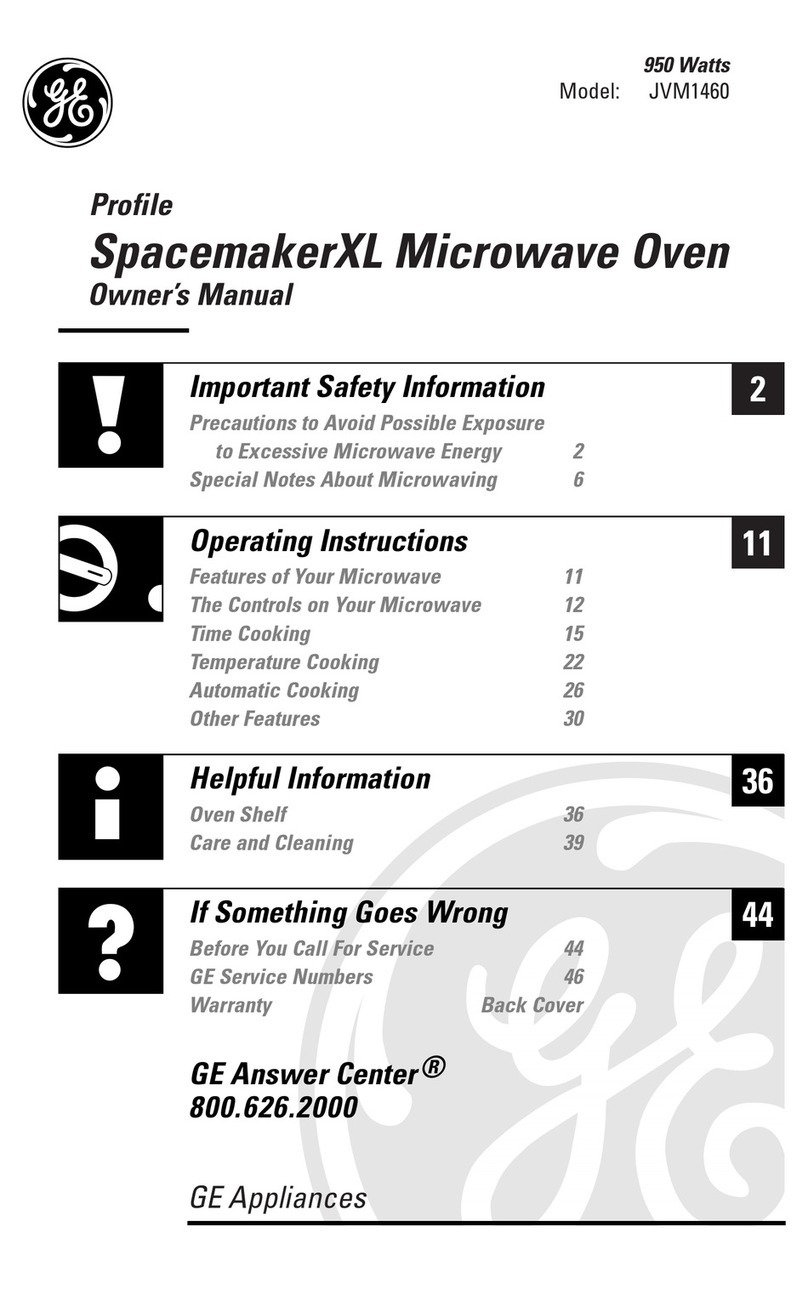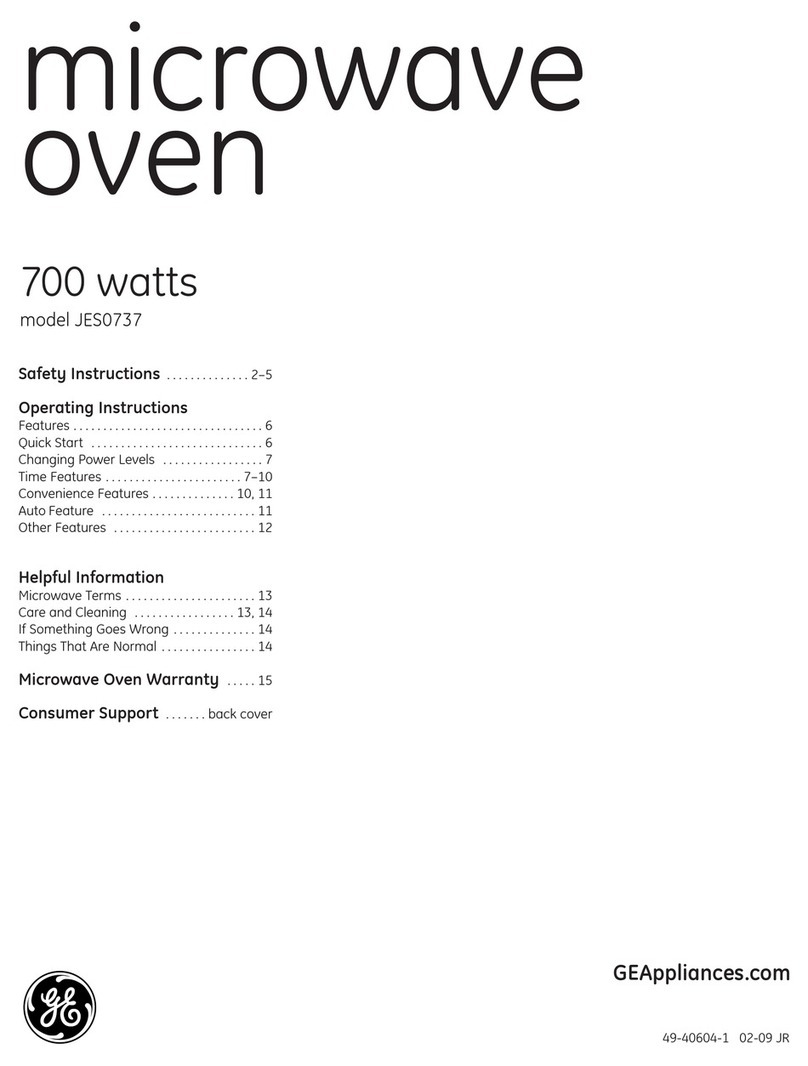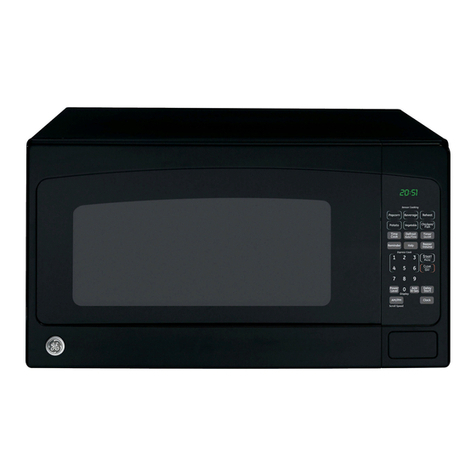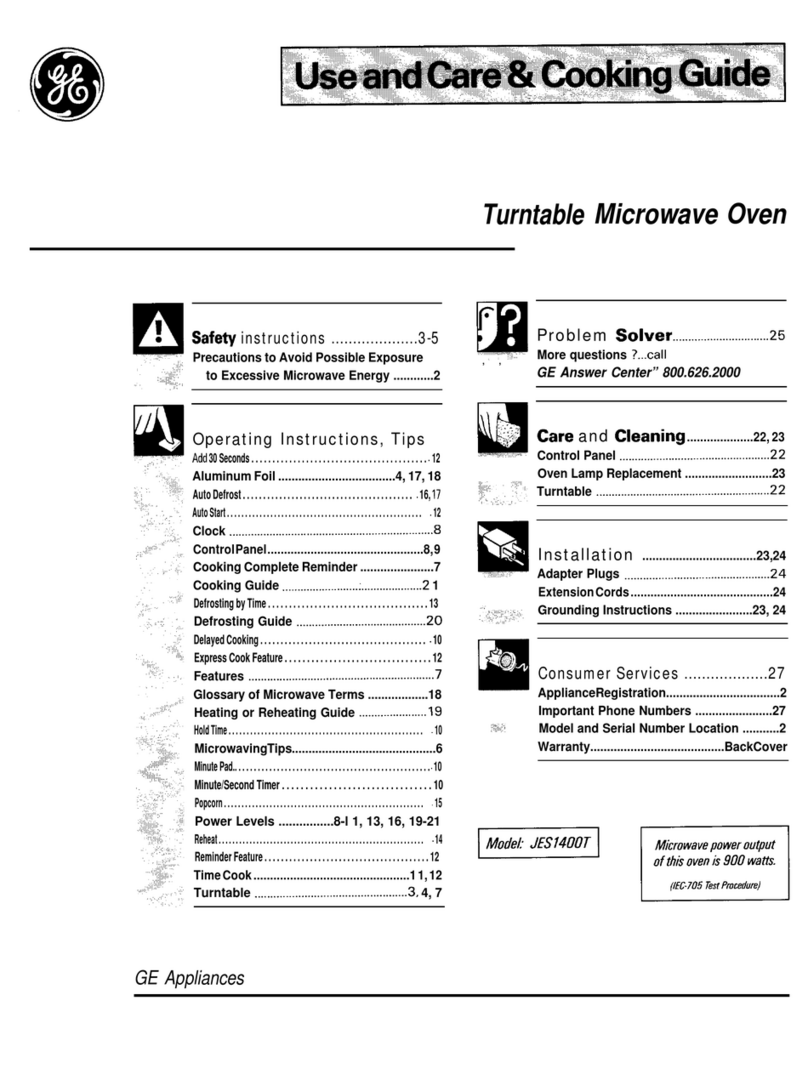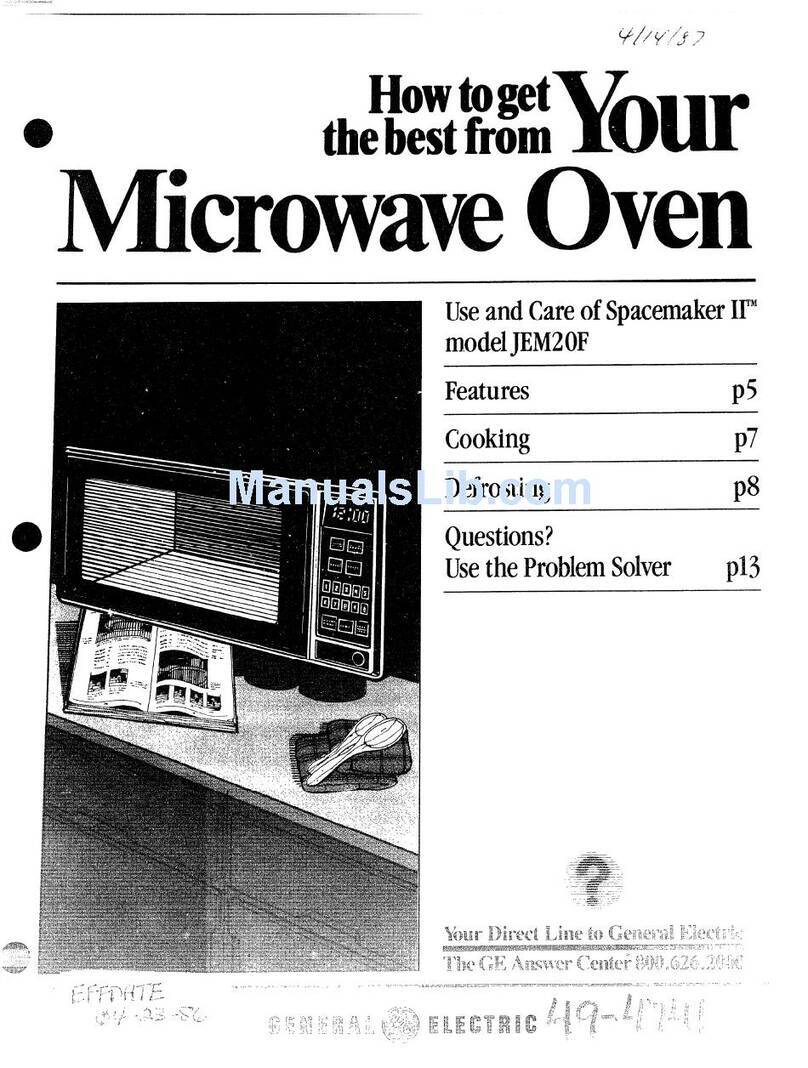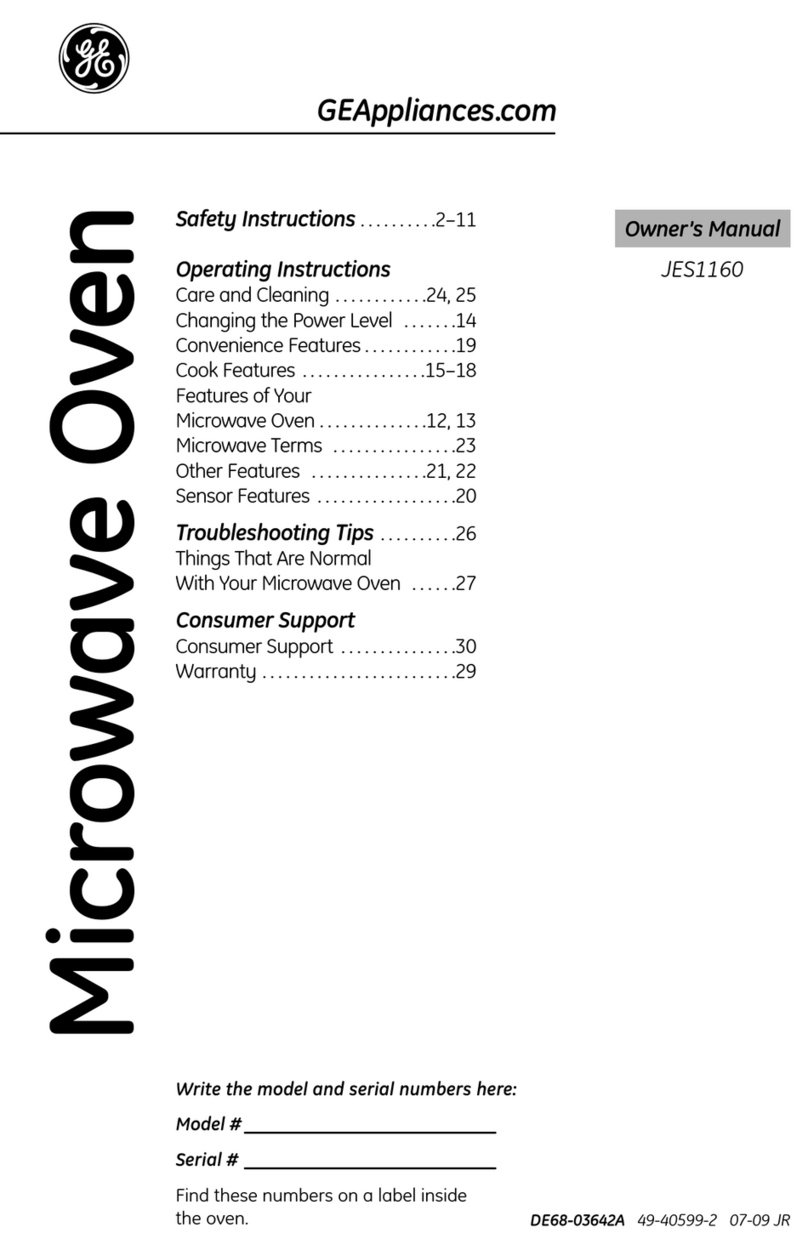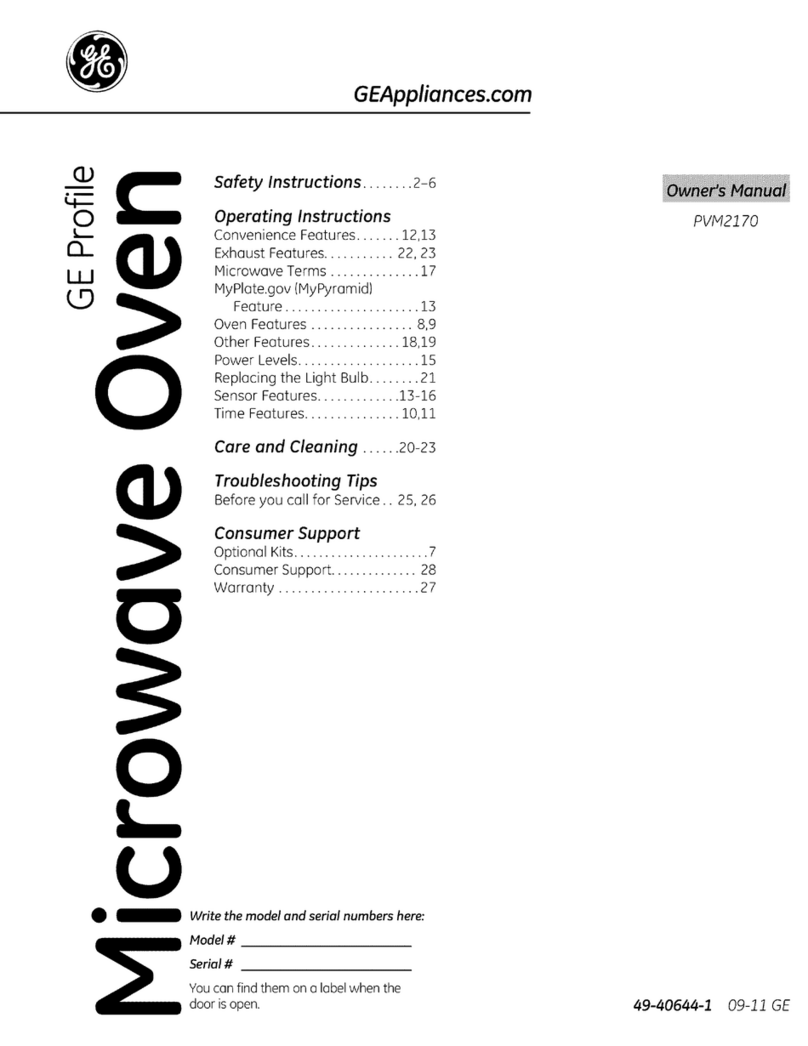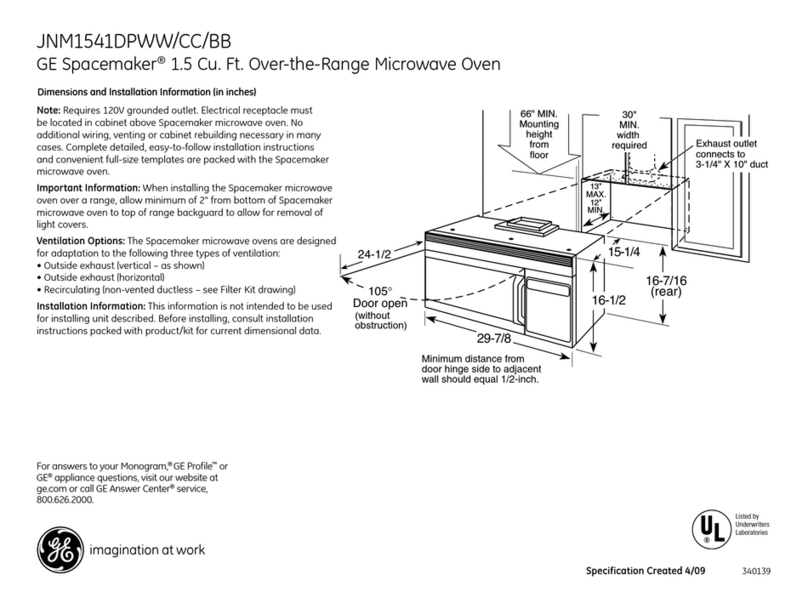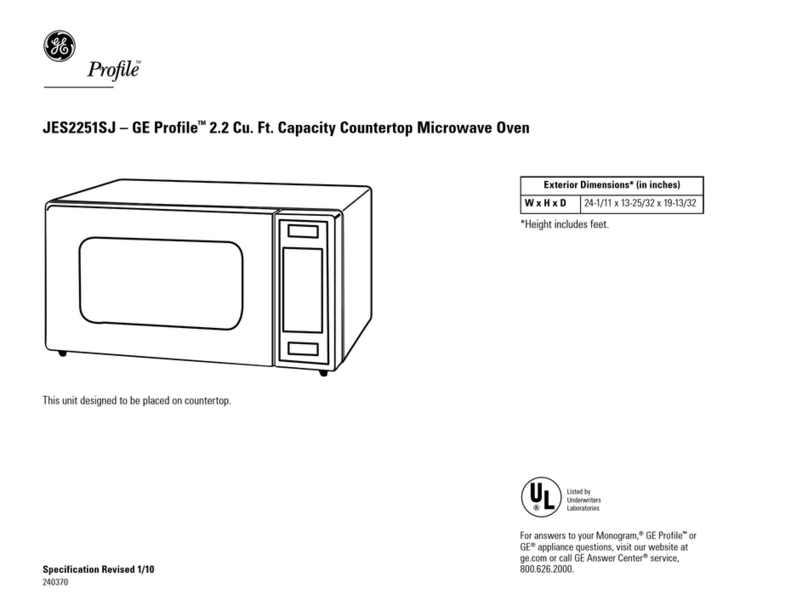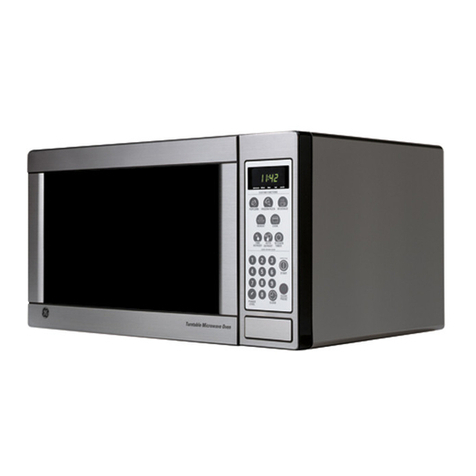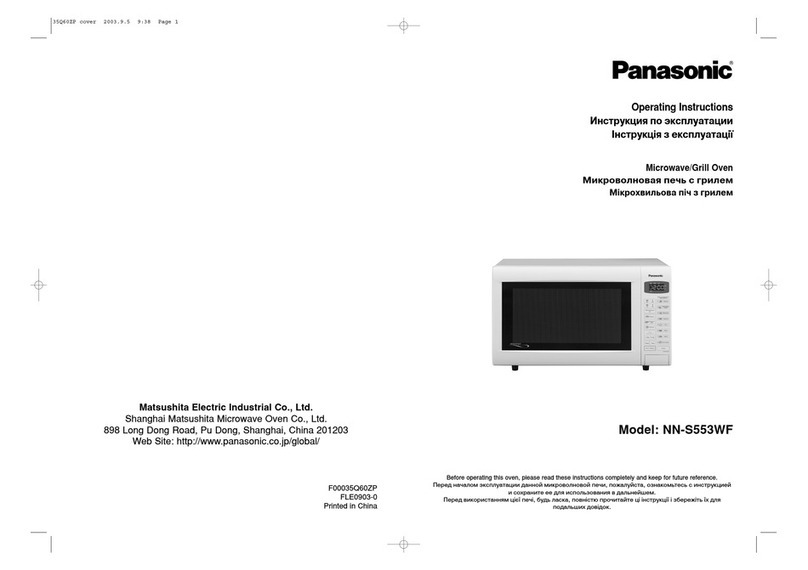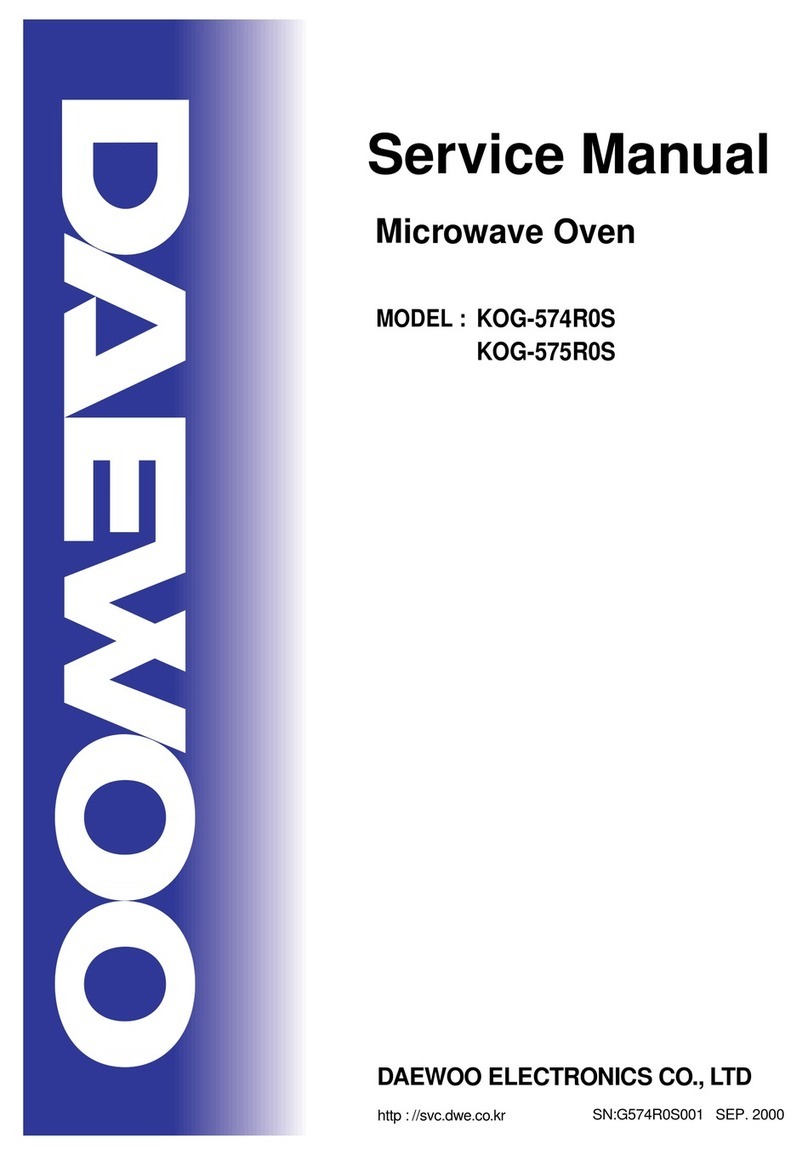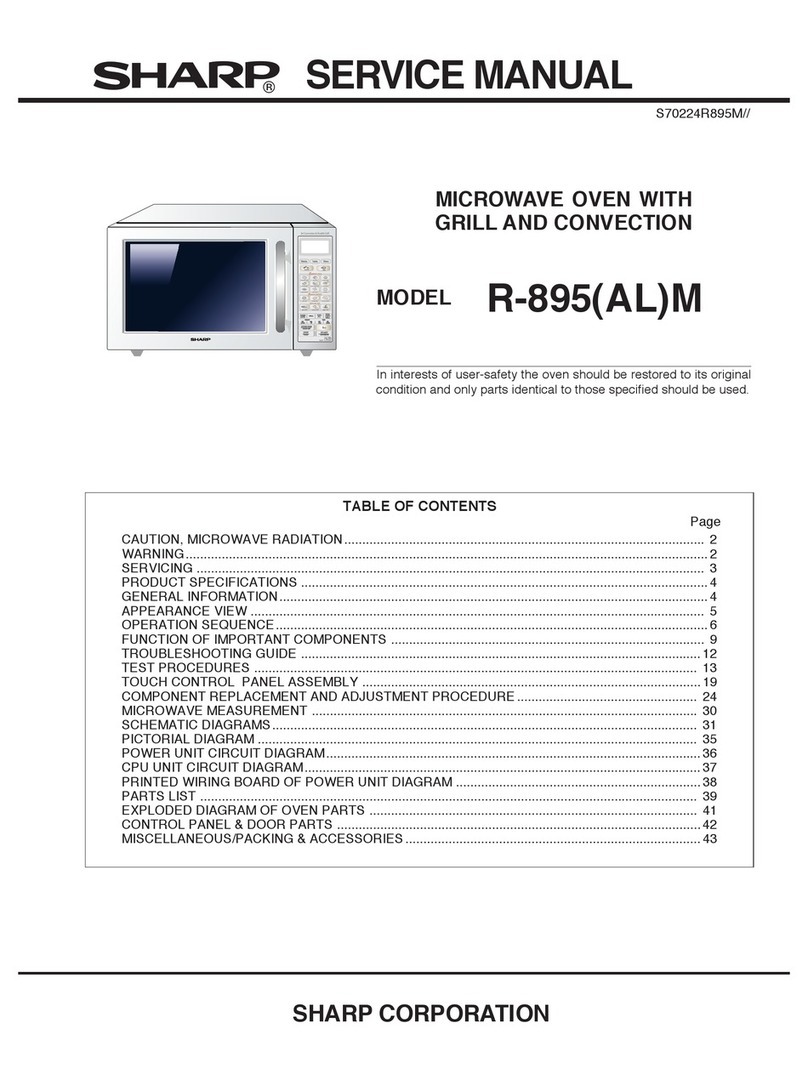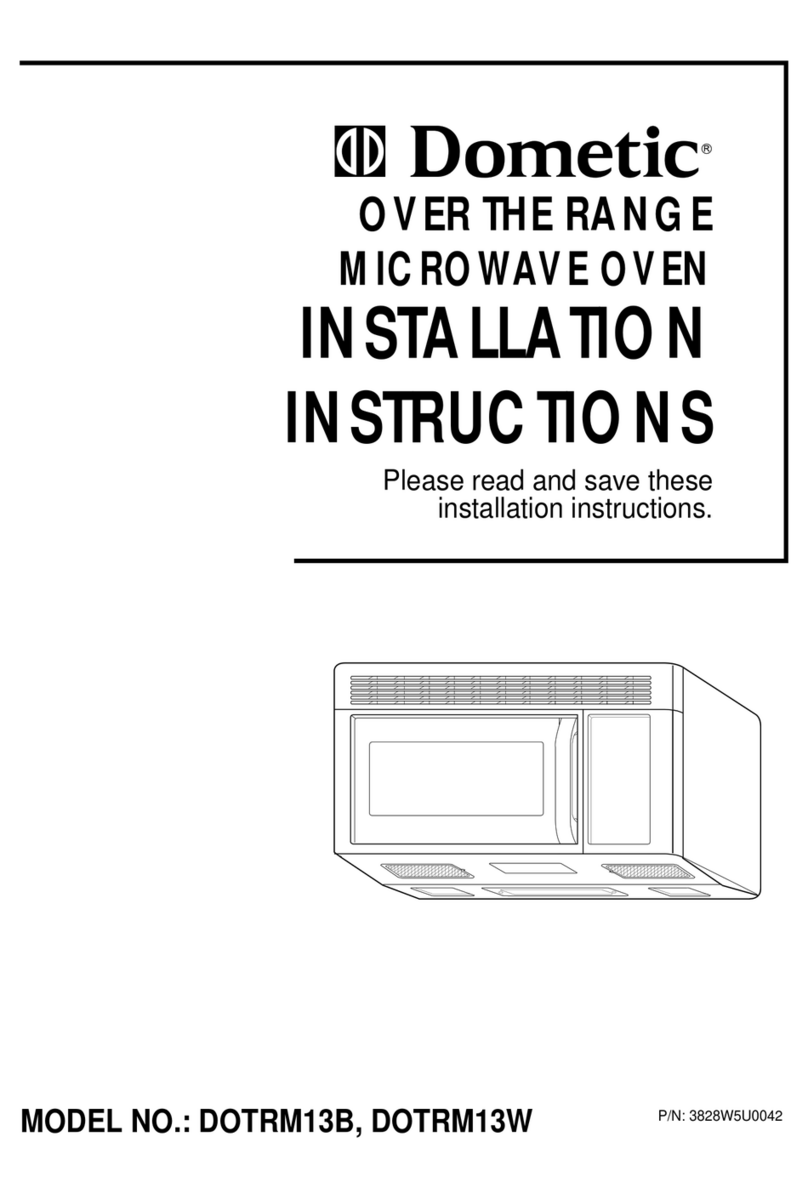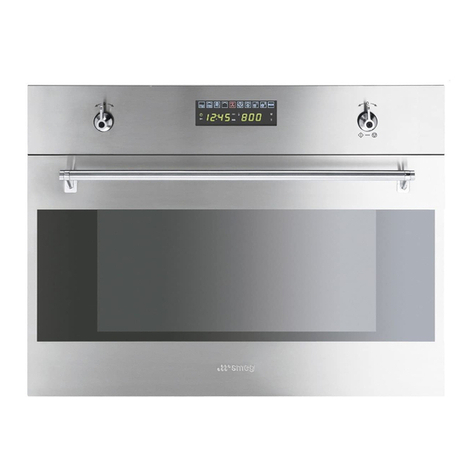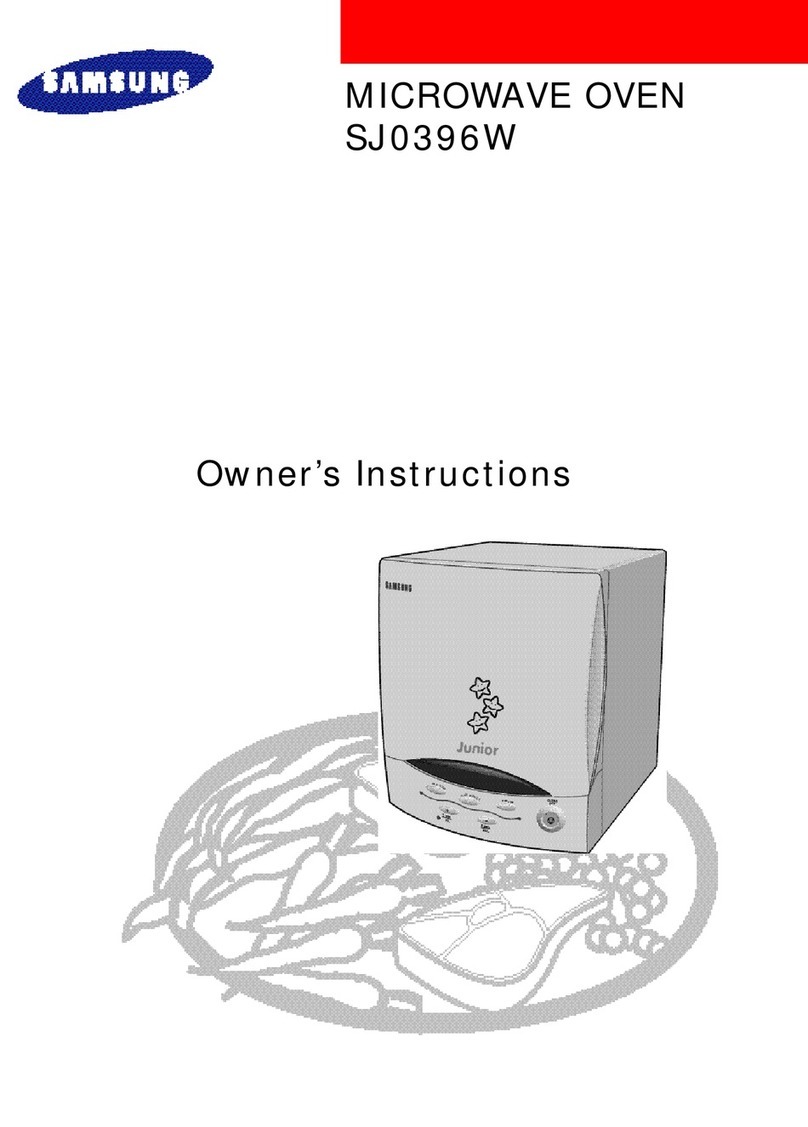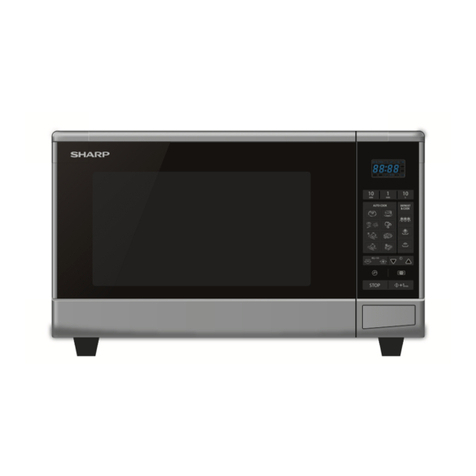Ail the things you can do with
y~~r ne~~~icrowave ovenm
d
Cooking versatility. Cook by time, by temper-
ature, with automatic slow cooking, or with
temperature hold. Your oven lets you tailor
the cooking to the food.
Fast, familiar cooking by time. You’ll find
most of your new microwave meals will prob-
ably be cooked by time. Use time cooking for
most casseroles, vegetables, appetizers,
snacks, and small, individual foods, like po-
tatoes, hot dogs, hamburgers and meatballs.
It’s handy, too, for pie crust, cakes and other
batter foods.
Use temperature cooking when you can’t af-
ford guesswork. The solid-state microwave
thermometer tells you the internal temper-
ature of food . . . areassuring way to cook.
Ideal for big roasts, turkey, and other foods
that need aspecific temperature for proper
doneness.
Temperature cooking takes the guesswork
out of reheating, too. You can cook unusual
shapes, sizes and amounts of food without
the risk of overcooking.
The automatic simmering feature* brings out
deep-down flavor and tenderness the micro-
wave way. Use all your favorite old-fashioned
slow-cooking recipes, with adifference. The
kitchen stays cool. And the automatic temper-
ature control keeps tabs on the temperature.
Let your food simmer all day, if you want. With
the automatic simmer feature, the oven
doesn’t shut off automatically, as it does with
time cooking and temperature cooking. It sim-
mers slowly until you’re ready for the food.
Temp Hold lets you hold foods at perfect
serving temperature. No need to let foods
lose their “just-cooked” freshness. Hold them
at the most appetizing serving temperature
for latecomers.
Defrost aturkey the afternoon of the feast.
The special Defrost setting is designed espe-
cially for bulky foods.
Time aphone call. The HOLD/TIMER setting
lets you do this, with solid-state precision . . .
Because the timer works separately, just like
the timer on your conventional range.
Microwave ameal without being there! The
Memory setting lets you decide how dinner
should be cooked. Then it remembers for
you. Someone
and the meal else can press START later,
is cooked just the way you
wanted, without you being there.
Use your oven this morning, while it’s re-
membering how to microwave tonight’s din-
ner. Using the Memory Entry/Recall* only
stores instructions. It doesn’t affect cooking.
You ‘re free to use the oven for any type
microwaving, while it’s remembering instruc-
tions for later.
Microwave more than one way, without re-
setting. Your new oven lets you defrost-hold-
and-cook for apreset time. For extra flex-
ibility, you can defrost-and-cook also, with
time settings. Or you can delay-and-cook with
time or temperature settings.
Adjust the power of the oven at the touch of a
finger. Ten Power Levels give you extra con-
trol over what’s cooking. But the oven stays
on full power (HIGH) unless you want a
change.
Enjoy awealth of new recipe ideas. The big
Microwave Guide and Cookbook included
with your oven tells you everything you need
to know to use your oven properly and suc-
cessfully. Microlessons take you step-by-step
through all the basics. And 445 recipes and
41 charts keep mealtimes interesting.
Two-shelf cooking* lets you microwave sev-
eral foods at once-even full meals! Refer to
special instructions.
The controls are easy to use
The controls are arranged the way you use
them, in top-to-bottom order. Start at the top,
and select acooking pad. Then the number
settings you want. Next aPower Level. Then
press START.
When you want to erase an instruction, the
CLEAR/OFF pad is clearly marked for you.
There’s even ashortcut! When recipes call for
whole minutes, just touch MIN, instead of
touching the zero pad twice.
Each time you give the oven an instruction, it
responds. Just listen for the signals. If you
hear ashort signal, the oven is saying “OK.”
Alonger, 3-second signal tells you that you’re
giving the oven instructions it can’t carry out.
‘*on models equipped with this feature.
5
